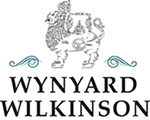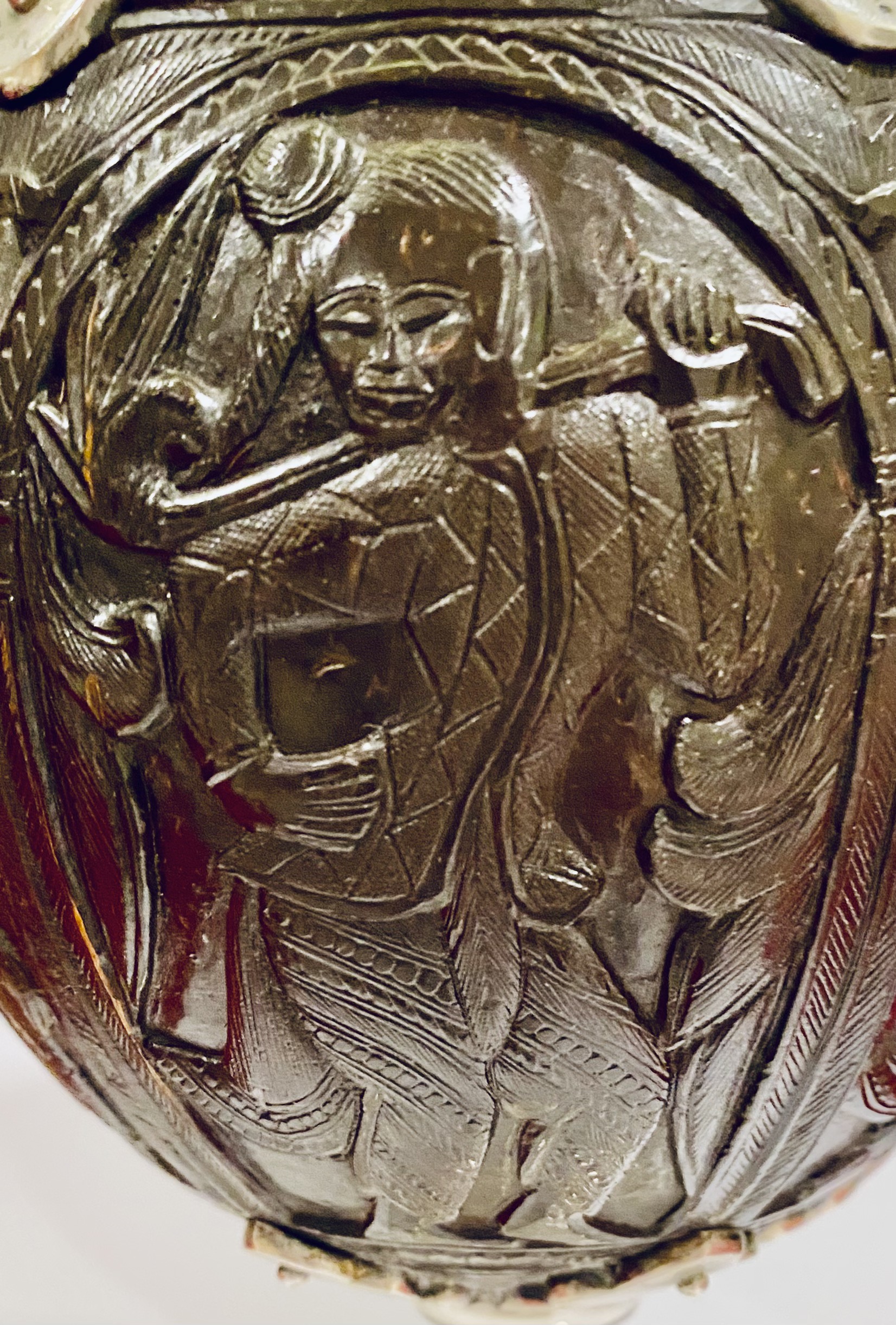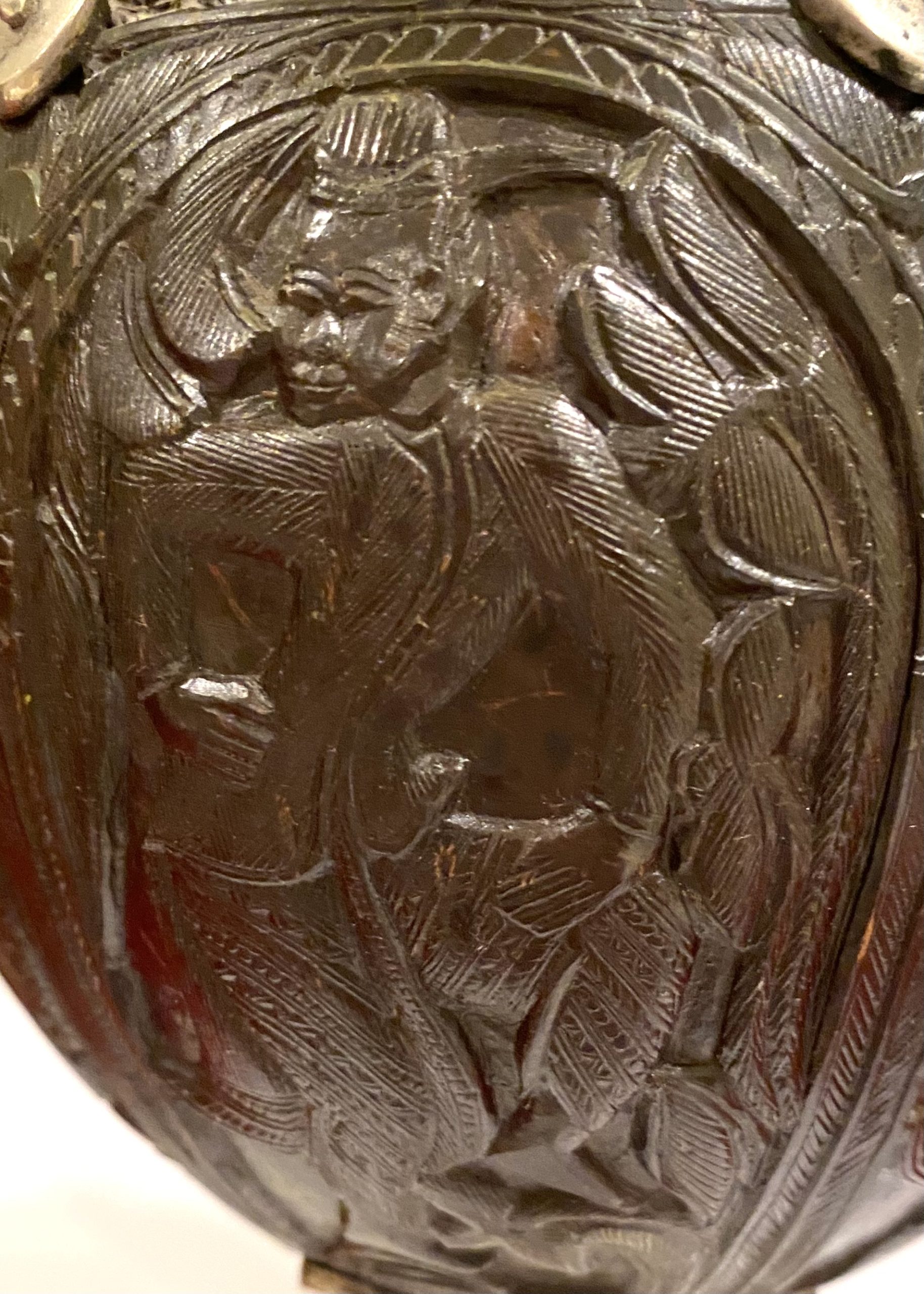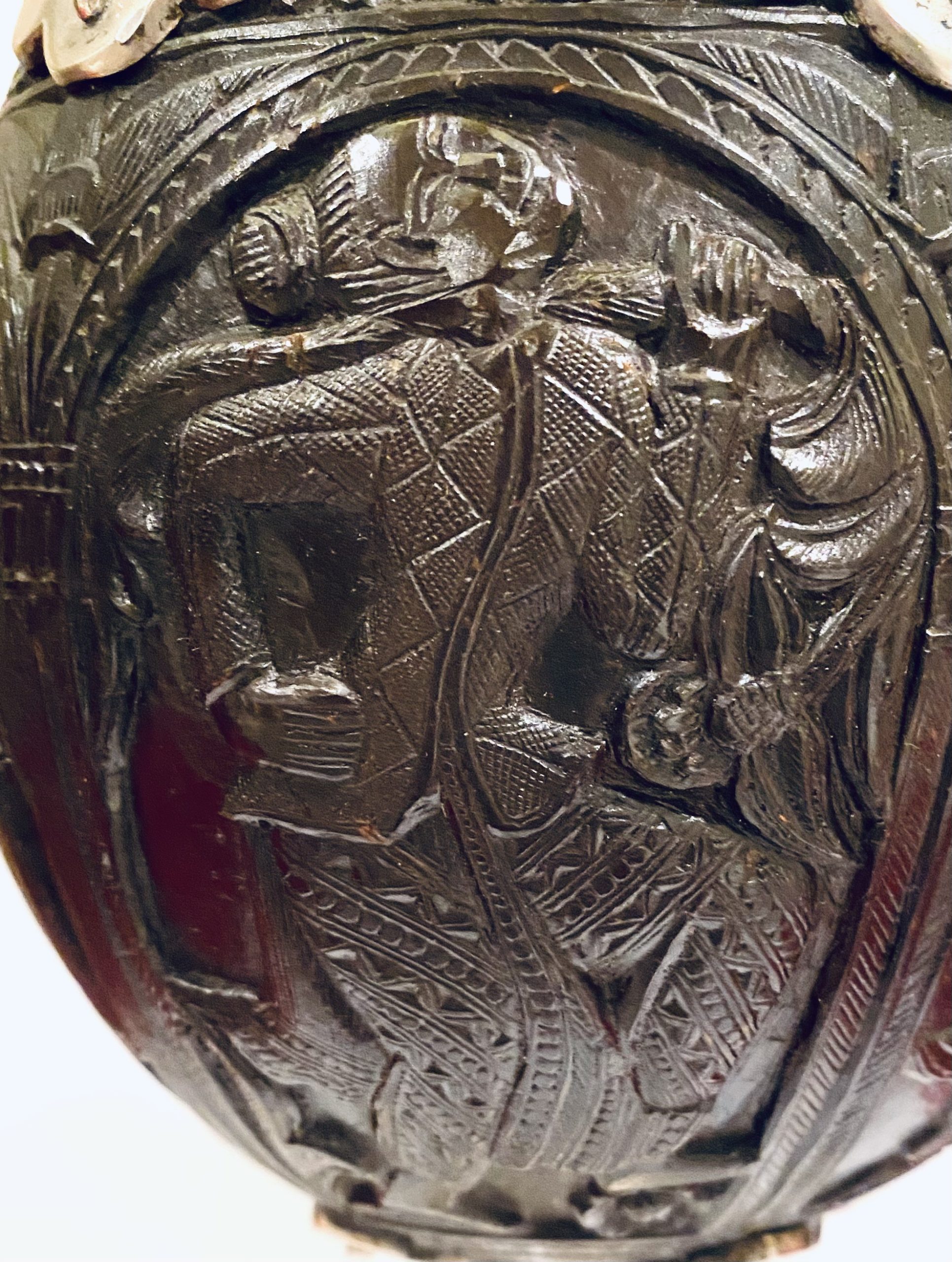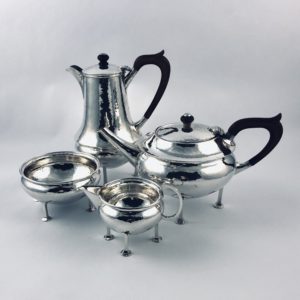Description
A carved coconut cup of conventional form with the coconut shell engraved with decorative designs on its exterior, opened at the top and capped with a silver rim and mounted on a base structure consisting of a concave flange to receive the base of the shell, atop a hollow circular stem flaring out to a stepped, domed, circular foot with a plain rim.
The coconut shell is very finely carved in a Sri Lankan style to show six panels, each set as if in a cloister of columns and arches, surmounted by flowers, and depicting individual characters in traditional dress and poses consistent with a story-telling or religious theme. The figures represented are possibly drawn from well-known stories such as that of the Ramayana.
With the decorative effort concentrated on the coconut shell, the silver rim and flange each have six lobes cut in a repeated engrailed arch pattern; the stem has only a simple pattern of pairs of engraved rings.
Otherwise, the metal surfaces are undecorated except for a matt finish. This feature was first developed in Bangalore during the latter decades of the 19th century and subsequently became popular elsewhere. The texture was achieved by finishing the flat undecorated surfaces of the silver with a strong acid which attacked the surface to produce a matt silk or satin-like finish; a similar effect could be created by striking the surface with a brass or steel brush or, if the metal was very soft and pure, with a bristle brush. This technique was introduced from Europe and much employed in the workshops of Barton & Co. from about 1870. The matt finish was also adopted with great success by P. Orr & Sons in Madras.
The silver is of good gauge and of Sterling standard or better.
Dimensions & Weight:
Diameter of cup (max): 12.3 cm / 4 7/8 in.; Diameter of base: 10.9 cm / 4 5/16 in.;
Diameter at rim: 8.5 cm / 3 3/8 in.; Height: 25.1 cm / 9 7/8 in.; Weight: 426 gm.
Maker’s Marks:
The maker’s incuse mark in plain bold capitals ‘ BARTON BANGALORE’ and ‘SILVER’ in a rectangular punch are struck on the outer rim of the cup base.
Barton & Co.:
Thomas Barton (born 1834 in Tonbridge, Kent) arrived in India in 1861. By 1862, together with James Edward Orr of the great Madras silver and jewellery firm, he founded Orr and Barton. It is interesting to note that Thomas Barton and James Edward Orr married sisters in Bangalore. In 1869, James Edward Orr retired to England, where he promptly died. Thomas Barton continued the firm as Barton of Bangalore and it continues to this day on the same site.
